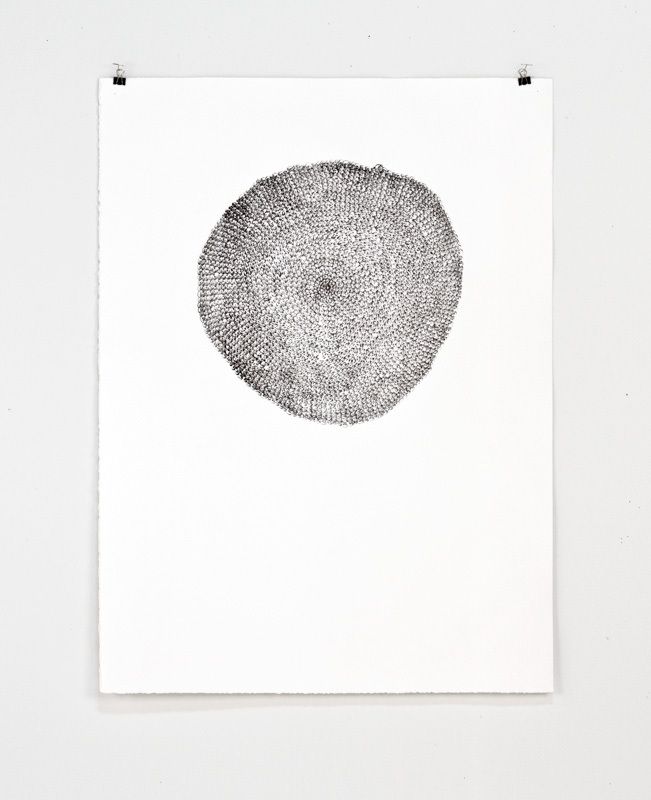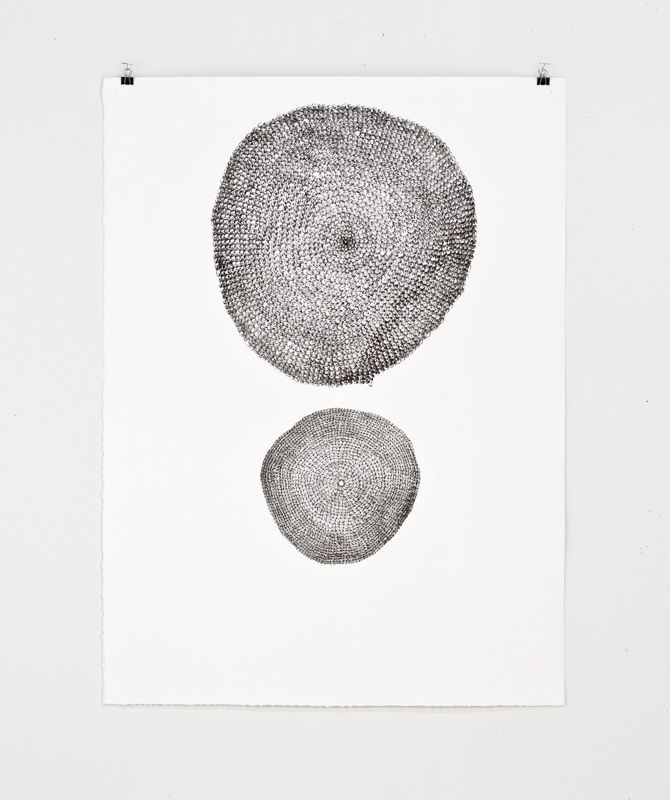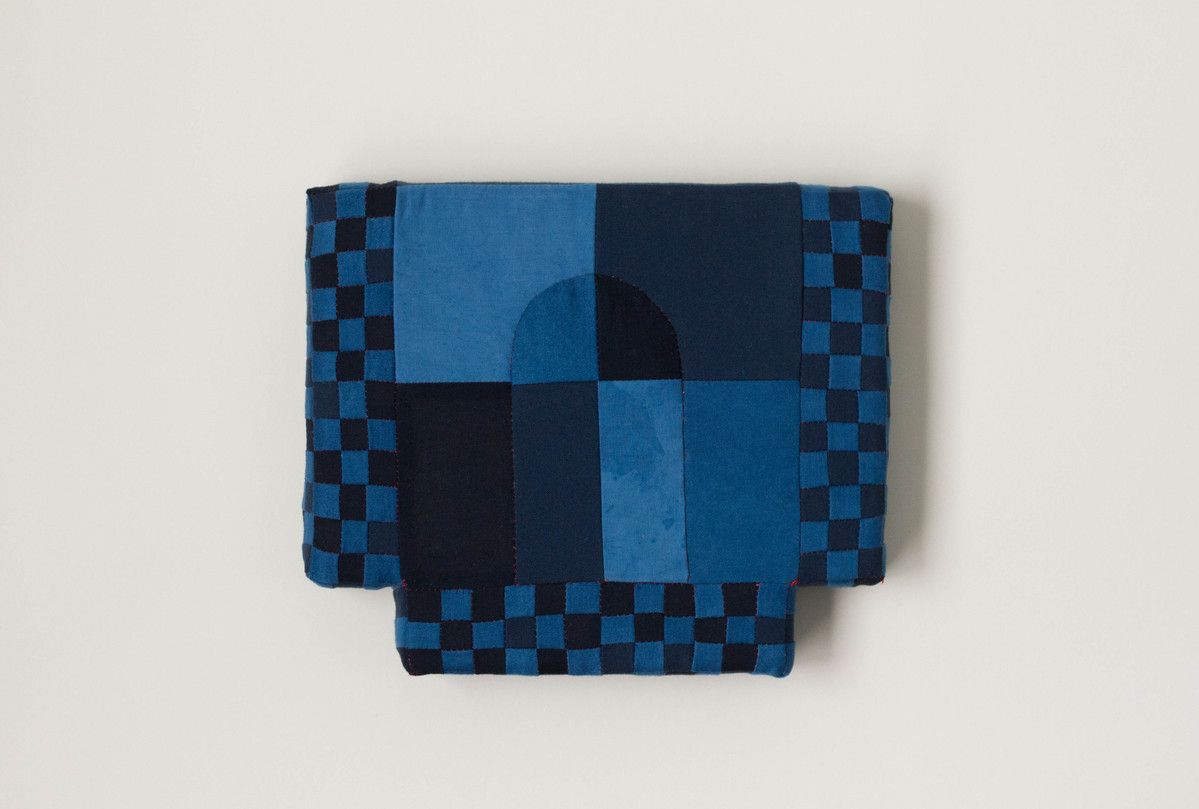Brittany Archibald is a multidisciplinary artist and quilter working primarily with textiles, photography, and digital mediums. Her work deals with the boundaries between the sacred and the common, both in man-made and natural settings, and investigates how traditionally feminized handcraft aids in imbuing objects with meaning.
“I use art as a way of externalizing my thoughts, so I can examine them more closely, get a better look at them. Sometimes, I’ll feel compelled to make something but won’t really understand why or what it means, and only after the piece is executed am I able to grasp the concept fully. I don’t necessarily view my art making as a way to make declarations, but rather to ask questions.”
What medium are you currently working in?
Primarily textiles, but my work often intersects with photography and digital mediums.
What inspires you?
Books, other artists, old churches and places of worship, totems, the sky, the earth, my childhood memories.
Can you share a bit about your technique?
While process informs my work, final product takes precedent. For me, this means that no method is off limits if it furthers my exploration of a concept. Right now, making art means lots of measuring, cutting, and sewing, but I’m willing to shift my practice when the work demands it (and it often does).


Have you always known art would be an integral part of your life?
Yes, in one way or another. For me, art making is compulsory; I am compelled to make things.
Has working with textiles always been a part of your art making process?
Not always, but much longer than even I realized. I studied printmaking in college, and some of my first ‘successful’ work was a series of prints, but instead of taking impressions of plates or blocks, I took impressions of rudimentary doilies that I'd crocheted. Textiles have always tugged at my brain, but it hasn't been until the last five years or so I really began using them as my primary medium. I enjoy very traditional textile work, like quilting, but lately I've been exploring the boundary between traditional textile craft and ‘fine art’. Some of my favorite artists play with and subvert conventional uses of materials, and I think that invisible boundary is a really interesting place to live. I like to think my pieces confront the viewer with their own biases about what they consider worthy of the capital ‘A’ Art designation. Textile work and handcraft are also inherently gendered practices, and I embrace their influence on the meaning of my work.
Can you tell us a little more about the intersection of your textile work with photography and digital mediums?
I like to think of my art making in terms of concepts rather than in terms of mediums, so I embrace my compulsion to use any materials, digital included, in my work. I’m also deeply interested in what part of the art is actually the art — Is it the time? The thought processes? The physical object? The documentation of the object? Textile work is tedious and slow; it is a deeply meditative process. Digital work can often be the same, tedious and slow, and both yield vey ephemeral products. Textiles are inherently impermanent, subject to wear and decay, while digital art can theoretically last forever but also does not actually exist in the physical world.

Please describe your current project.
Currently, I’m working on a body titled Portals, a series of wall sculptures wherein textile is the primary medium. Portals deals with the passage from one space to another, both literally (as in the entryway to a physical space), as well as metaphorically (as in the passage from confusion to clarity). I am deeply interested in ritual, especially its relation to religion and spirituality, and the intricate and sometimes tedious handwork involved in this series serves to orient me within my own personal ritualistic practice.
I love how you talk about a passage from confusion to clarity. Does creating art serve as a portal to clarity in some ways?
Wow, I love this question. Absolutely. My art practice serves to orient me in the world. It’s how I ask questions and process concepts that feel too big for language. Often, I won’t fully grasp the meaning of a piece until it’s finished — the making allows me to externalize my ideas, separate them from myself, so I can see them more clearly. I’ve been making work about portals lately — the passages between sacred and common spaces, between Here and There — and this question made me realize I use art making as a portal from one understanding to another. With each piece, my mindset shifts as my understanding grows, and even if it’s only a slight shift, it’s still a new space. I definitely think of my own art practice as a way to ask questions, not as a way to make declarations. The making is the question, and the object is the answer. Each question yields one (or many) answers which spur new questions which yield new answers and on and on. There’s no end, and I’m glad for it.

What have you discovered in your quest to explore the boundaries between common and sacred?
Big question! The short answer is that I’ve discovered nothing but that I enjoy thinking about it anyway. The longer answer is this is the meat of my work right now, and while I’m not interested in declaring definitively what is sacred and what is common, I am of the mind that these boundaries are largely self-ordained, even if a large number of people agree on the boundary (as with a place of worship). But just because they are self-ordained does not mean they are unreal or unimportant. My opinions on sacred spaces are forever evolving; but right now, I consider the passage from common to sacred as something that exists in the mind, and rarely in the physical world. We are physical beings, though, and so I think having a physical space or object to anchor us to sacredness is very comforting. That’s what I’m trying to tap into with my current series of soft wall sculptures: can some combination of tactile handwork and symbolism combine to pull the viewer into a different mental space? Does each piece lead somewhere different? How many varieties of sacredness exist?
How do you respond to a ‘block’ or lack of motivation to create?
There’s this TED Talk by Elizabeth Gilbert called “Your Elusive Creative Genius” that I recommend to all creatives; she essentially says you just have to show up. That’s the whole of your responsibility — just showing up consistently. I watched her talk at a really formative time in my art making and it has become a large part of my art practice’s foundation, especially the difficult stretches: just show up. I have a sketchbook that’s just for me, which removes any pressure of an audience, and I open it and make absolute garbage. Page after page, I just make stuff with no expectation at all until one day something pings in my mind again. I also keep a note in my phone of ideas or phrases that tug on my brain, and I find going over that can help generate some momentum. Make bad art!
What would you say to someone who is just starting out in their journey as an artist?
I’d say that every artist on every level is just some random person who had some ideas. They are not special, and they do not have some art magic juice that you don’t. I’d also say don’t be disheartened if you discover an artist making similar work to you! We exist in a kind of social consciousness, and often if an idea is being explored in multiple places, that means the idea is worthwhile. Don’t abandon it; find a way to respond to it. If you are compelled to make, then make.
Who are your favorite artists?
In no particular order: Rachel Whiteread, Rineke Dijkstra, Hilma af Klint, Ellsworth Kelly’s Austin, Agnes Martin, Louise Bourgeois’s textile work, Ben Styer, Daniel Everett, Megan Knobloch Geilman, and quilter Lesley Gold.
Can you think of a time when a piece of artwork (yours or someone else’s) shifted your perspective in a profound way?
Yes. Felix Gonzalez-Torres’ Perfect Lovers. What’s funny is that it shifted my entire understanding of what art can be without me even having seen it — just the description had an incredible effect on me. Perfect Lovers consists of two ready-made, battery-powered face clocks, synchronized and hung side by side. They tick their lives away in perfect synchronicity until one begins to slow before the other as its battery runs out, and they become more and more out of synch until one inevitably dies, leaving the other to tick away the rest of its life alone.
Aside from being deeply moving on a personal level, Perfect Lovers completely upended my understanding of new media in art and opened my eyes to the power of non-traditional materials as a valid creation choice.
How can our community better support artists?
DrewBoy and Tumbleweird do so much for Tri-City artists, so first a big thank you to you guys. I believe the best way to support artists is to compensate them for their work, and DrewBoy does that generously through shows and prizes. Artists need art communities; it’s impossible to make art in a vacuum. Avenues for artists to connect with one another, spaces for critiques, and places to show work are invaluable.
Main image: Portal i by Brittany Archibald.
Ashleigh Rogers is the Creative Director at DrewBoy Creative. She is an artist and art instructor living in Richland, Washington with her husband and three children.
Find her on Facebook:
fb.com/AshleighRogersArt or
Instagram: ashleigh.a.rogers


